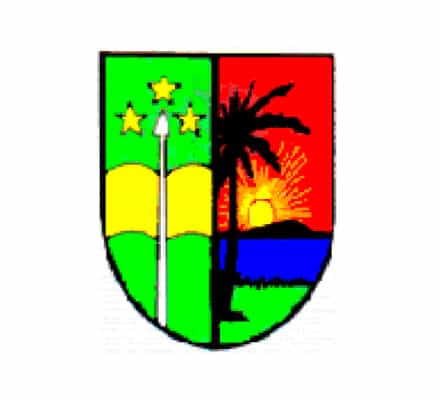*the words in italics are in Lingala, those with an asterisk (*) are in KiMbole Ngoyangoya.
The impressive hydrography of the Congo basin and the diversity of its rivers make fishing an important activity for the subsistence of the inhabitants of the tropical forest. This activity, fishing in the rivers and in the forest, requires a means of transportation: the bwátu (weto*), i.e. the traditional dugout canoe, whose success, number and popularity indicate the extent to which an invention from the distant past is today part and parcel also of Central Africa’s modern era. While many people travel great distances to obtain a bwátu for transport or fishing, the people who make them also travel, exporting their know-how to places that are sometimes far from their original environment: the case of the young Besemaka, alias Bese, presented here, shows how the know-how to build a canoe moves with the craftsman, and is thus passed on in time and space.
It’s Thursday, 17 August 2023, the day scheduled for foofi* or kopepa (scoop fishing) at Likau, a permanent fishing camp on the Lomami River. Likau is two and a half hours downstream from Opala by bwátu ya koluka (paddle canoe). It takes at least five hours to travel up the river from here and back to the main town, Opala. Besemaka, alias Bese, makes dugout canoes here in Likau. A young man of twenty-five, he comes from the village of Yakongolo, downstream on the right bank. Bese arrived in Likau accompanying his maternal aunt (mama leki), who was taken in marriage by a young man from Likau, and was thus displaced according to the virilocal patrilineal kinship system. He explains his motives himself by the expression kolukaluka (trying to survive, getting by), but soon discovered that in Likau he was the only one who knew how to carve dugout canoes.
While Bese also knew how to fish (koloba) and work the fields (bilanga) like the other inhabitants of Likau, as a child he had already learned to make a whole range of objects: nzungu (pots made from recycled aluminium), mitambo ya nyama (game traps), bibonga (traditional chairs made from lianas and sticks), mbeto (beds), but above all bwátu (dugout canoes). Although his father was not the only builder of dugout canoes in Yakongolo, it was from him, his biological father (tata moboti), that he learned the trade.

Soon after his arrival in Likau, he was able to establish a reputation as a bwátu maker. As he proudly declares, “making canoes is my speciality!” Today, he is Likau’s most sought-after builder.
Bese explains that two tools are crucial for building dugout canoes: the lifa* (axe) and the ikenye* (planer). The lifa* (axe) is used to cut the chosen tree and shape the bwátu; the ikenye* is used to plane and ‘clean’ the trunk to make it smooth and presentable. The time it takes to make a bwátu depends on its size.
The names of the different parts reveal a clear anthropomorphism:
| Mbole Ngoyangoya | Lingala | Français |
| molo o weto | The two pinpoints of the canoe, in the front and at the back | |
| Molo e felo | Elongi ya bwátu | Front point of the canoe |
| Molo e mbisa | Lisembe ya bwátu | Point at the back of the canoe |
| Litoka li weto | Libulu ya bwátu | Hole in the canoe where a chain or rope is attached |
| litoka li weto | Mipanzi ya bwátu | The ribs of the canoe |
| otema o weto | Motema ya bwátu | The heart or hollow central part of the dugout canoe |
| lifusa li weto | The inner part of the dugout canoe where you sit | |
| Litanala li weto | Libumu ya bwátu | The belly of the dugout canoe |
| Aimo o weto | Ma-/li- tama ya bwátu | The cheeks of the canoe |
| Okongo o weto | Mokongo ya bwátu | The back of the dugout canoe |
| Ikeka i weto | Canoe separator | |
| Ayolo a weto | Ekiteli ya bwátu | Diagonal / slope of the dugout canoe |
Unlike the bwátu builders of Basali on the Lulu river in Basoko territory, where we also met dugout canoe makers, in Basali the bohulu (tola) is the preferred tree for building bwátu because of its ability to float on water and its straight shape, which allows the dugout canoe to be trimmed properly, Bese uses a range of trees to make bwátu, including species known in KiMbole ngoyangoya as wele*, liboyo*, likole*, olongo*, oulu*, otumé*, lisoma*, isoilale*, lilausa*, likoke*, wangha*, okolome*, isali* and lioko*. However, according to Bese, bwátu made from oulu*, isoilale*, wangha*, isali*, okolome* and wele* last about ten years longer than the others. Most of his potential customers are fishermen. Although the tools and processes used to build bwátu are very similar in Opala and Basoko, it should be noted that the size and, above all, their shape differ: the reasons for these differences are undoubtedly ecological and linked to the uses of the canoes, but there is also a historical dimension that has yet to be fully explored in future research. In the Opala centre there are also other bwátu makers, including Papa Otoko Osumaka JB, who builds his bwátu in the Okongo o ngba* forest, just upstream from Opala, around two hours away by pirogue.

Photo by P. Lambertz. BY-NC-ND.






